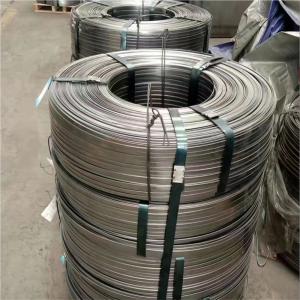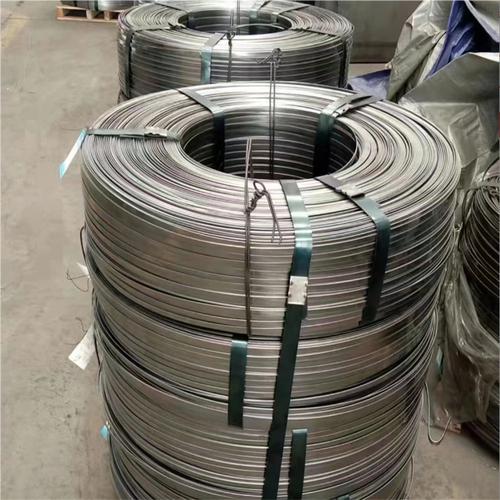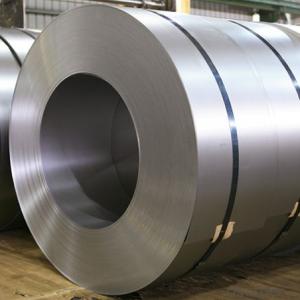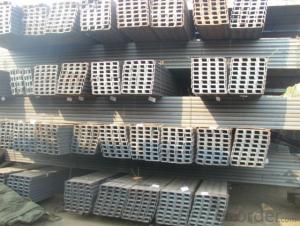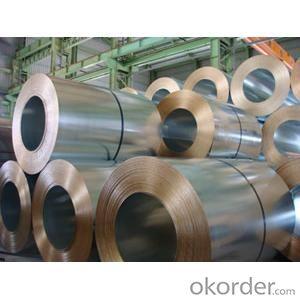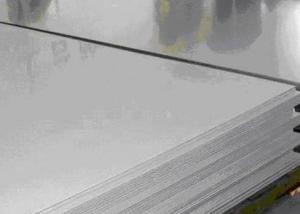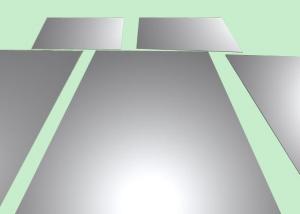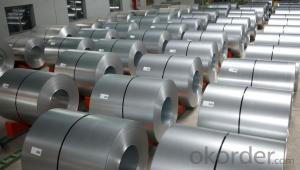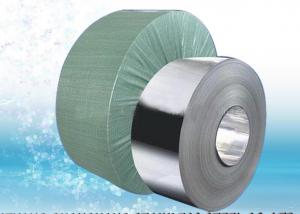Cold rolled bright annealed black steel strip
- Loading Port:
- Tianjin
- Payment Terms:
- TT OR LC
- Min Order Qty:
- 1 T
- Supply Capability:
- 2000 T/month
OKorder Service Pledge
OKorder Financial Service
You Might Also Like
Specification
Cold rolled bright annealed black steel strip
Annealed black steel strip is a type of steel strip product that has been processed through processes such as cold rolling, heating, constant temperature, and insulation.
Its main features are a shiny surface, good flexibility, and slightly higher hardness. Annealed black steel strip is commonly used in applications that require soft iron wire, such as construction, mining, chemical, welding mesh, welding hangers, and other reprocessing fields.
The main characteristics of bright annealed black steel strip include:
Excellent surface glossiness: After special treatment, the surface is smooth and has a good appearance.
Lower degree of oxidation: During annealing, the phenomenon of oxidation and decarburization is reduced by controlling the temperature and cooling process.
Widely applicable: Suitable for various industrial fields, such as mechanical manufacturing, automotive parts, building materials, etc.
Thickness: 0.25mm
Width: 36mm
Roll inner diameter: 300mm
Roll outer diameter: 650mm
Multiple specifications, supporting customization of different material widths and thicknesses.
- Q: Can stainless steel strips be used in the production of cutlery?
- Indeed, cutlery production can make use of stainless steel strips. The popularity of stainless steel for cutlery stems from its exceptional resistance to corrosion and staining, as well as its impressive durability and strength. As a result, stainless steel strips are frequently employed as the primary material in the manufacturing process, as they can be easily molded and shaped into diverse utensil designs. Furthermore, these strips can be polished to achieve a desirable smooth and shiny surface for the cutlery. In conclusion, stainless steel strips possess the essential qualities needed to produce cutlery that is both of superior quality and long-lasting.
- Q: Can stainless steel strips be used in the agriculture industry?
- Indeed, the agriculture industry can make use of stainless steel strips. Stainless steel is renowned for its exceptional strength, durability, and resistance to corrosion, making it an ideal option for a range of agricultural purposes. One application for stainless steel strips is in the fabrication of agricultural machinery and equipment, such as tractors, plows, and harvesters. These strips can be shaped into various components, including brackets, frames, and supports, which provide the machinery with both structural integrity and longevity. Furthermore, stainless steel strips are commonly utilized in the construction of storage tanks, silos, and containers for holding fertilizers, pesticides, and other agricultural chemicals. The corrosion resistance of stainless steel guarantees the safe storage of these substances, preventing any contamination or leakage. Moreover, stainless steel strips find use in the creation of greenhouse structures and irrigation systems. By forming the strips into hoops and supports, sturdy and long-lasting greenhouse frames can be produced. Additionally, these strips can be employed in irrigation pipes and fittings to ensure the efficient delivery of water to crops without degradation or contamination. Additionally, stainless steel strips are invaluable in the manufacture of agricultural tools and implements, such as knives, blades, and cutting edges. Thanks to stainless steel's high strength and wear resistance, these tools are durable and capable of withstanding the demanding conditions of agricultural operations. To summarize, stainless steel strips offer a host of advantages to the agriculture industry, including strength, durability, and corrosion resistance. These qualities make stainless steel a fitting choice for various agricultural applications, ultimately enhancing productivity, efficiency, and safety within the sector.
- Q: Can stainless steel strips be used in chemical storage applications?
- Yes, stainless steel strips can be used in chemical storage applications. Stainless steel is resistant to corrosion and has excellent strength, making it suitable for storing and handling various chemicals. Additionally, it is easy to clean and maintain, making it a reliable choice for chemical storage.
- Q: What is the thickness range of stainless steel strips?
- The thickness range of stainless steel strips varies, but commonly ranges from 0.02 to 5.00 millimeters.
- Q: Are stainless steel strips suitable for HVAC applications?
- Indeed, HVAC (heating, ventilation, and air conditioning) applications find stainless steel strips to be suitable. Stainless steel, as a versatile and durable material, exhibits exceptional resistance to corrosion, heat, and pressure. These attributes render it highly suitable for deployment in demanding environments commonly encountered in HVAC systems. In HVAC applications, stainless steel strips find widespread usage for a variety of purposes. Notably, they are frequently employed in the fabrication of air ducts, which serve as vital components for distributing heated or cooled air throughout a structure. Stainless steel strips provide the requisite strength, rigidity, and resistance to endure the pressure and temperature fluctuations inherent in ductwork. Moreover, stainless steel strips also play a pivotal role in HVAC systems by facilitating the production of heat exchangers. These components are indispensable for transferring thermal energy between fluids. The corrosion resistance of stainless steel ensures that heat exchangers can withstand exposure to diverse liquids and gases without succumbing to degradation over time. Furthermore, HVAC applications favor stainless steel strips due to their hygienic properties. They are easily cleaned and maintained, while being unfriendly to the growth of bacteria or mold. Consequently, they prove to be an ideal choice for usage in environments where air quality holds paramount importance, such as hospitals and laboratories. In conclusion, stainless steel strips emerge as an ideal choice for HVAC applications. Their exceptional corrosion resistance, durability, and hygienic properties establish them as a dependable option for manufacturing air ducts, heat exchangers, and other crucial components employed in HVAC systems.
- Q: What are the different types of surface finishes for stainless steel strips?
- There are several different types of surface finishes that are commonly used for stainless steel strips. These finishes are applied to the surface of the stainless steel in order to improve its appearance, increase its corrosion resistance, and enhance its durability. 1. Mill Finish: This is the most basic type of surface finish, which is achieved by leaving the stainless steel strip in its original, as-produced state. It has a dull, non-reflective appearance and may have visible imperfections or marks from the manufacturing process. 2. No. 1 Finish: Also known as hot-rolled annealed and pickled (HRAP), this finish is achieved by annealing the stainless steel strip and then pickling it in acid. It has a smooth, reflective surface with a slightly matte appearance. No. 1 finish is commonly used in industrial applications where surface appearance is not a primary concern. 3. No. 2B Finish: This finish is achieved by cold-rolling the stainless steel strip and then annealing and pickling it. It has a smooth, reflective surface with a bright, semi-reflective appearance. No. 2B finish is commonly used in applications that require a good balance between appearance and corrosion resistance, such as kitchen appliances and architectural elements. 4. No. 4 Finish: Also known as brushed or satin finish, this finish is achieved by mechanically polishing the stainless steel strip with abrasive materials. It has a smooth, matte appearance with fine parallel lines, giving it a brushed texture. No. 4 finish is commonly used in decorative applications, such as furniture, elevator panels, and decorative trims. 5. No. 8 Finish: Also known as mirror finish, this finish is achieved by polishing the stainless steel strip to a highly reflective surface. It has a mirror-like appearance with excellent reflectivity. No. 8 finish is commonly used in architectural and decorative applications that require a high-end, polished look, such as signage, jewelry, and automotive trims. In addition to these main surface finishes, there are also other specialized finishes available for specific applications, such as embossed finishes, patterned finishes, and colored finishes. These finishes further enhance the aesthetic appeal and functionality of stainless steel strips in various industries.
- Q: What is the corrosion resistance of stainless steel strips in alkaline environments?
- Stainless steel strips have excellent corrosion resistance in alkaline environments. The chromium content in stainless steel forms a protective oxide layer on the surface, preventing the metal from reacting with alkaline substances and thus reducing the risk of corrosion.
- Q: Are 111 stainless steel strips suitable for architectural applications?
- Certainly, architectural applications can indeed benefit from the use of 111 stainless steel strips. Architects often prefer stainless steel for its exceptional durability, resistance to corrosion, and appealing visual qualities. The grade 111 stainless steel offers a cost-effective and easily obtainable option for a wide range of architectural uses, including wall cladding, roofing, handrails, and decorative elements. Nevertheless, it remains crucial to carefully assess the unique demands of each architectural project and seek guidance from experts to guarantee that the chosen material adheres to the essential standards and specifications.
- Q: Can stainless steel strips be used in the production of architectural façades?
- Yes, stainless steel strips can be used in the production of architectural façades. Stainless steel is a highly versatile and durable material that offers numerous benefits for façade applications. It is resistant to corrosion, which ensures the longevity and aesthetics of the façade. Additionally, stainless steel has a sleek and modern appearance that can enhance the overall design of the building. It is also available in various finishes, such as brushed or polished, allowing for customization and design flexibility. Moreover, stainless steel strips can be easily formed and fabricated to create different shapes and profiles, enabling architects to achieve unique and intricate façade designs. Overall, stainless steel strips are a popular choice in architectural façade production due to their durability, aesthetic appeal, and versatility.
- Q: How do you prevent galling of stainless steel strips?
- To prevent galling of stainless steel strips, there are a few measures that can be taken: 1. Lubrication: Applying a lubricant to the surfaces in contact can significantly reduce the risk of galling. Lubricants such as anti-seize compounds, oils, or greases can create a barrier between the two surfaces, reducing friction and minimizing the chances of galling. 2. Surface Finish: Ensuring that the stainless steel strips have a smooth surface finish can help prevent galling. Rough or uneven surfaces can lead to increased friction, making galling more likely. Polishing or grinding the surfaces can help create a smoother finish, reducing the risk of galling. 3. Material Selection: Choosing the right grade of stainless steel can also play a role in preventing galling. Some grades of stainless steel have better resistance to galling than others. For instance, austenitic stainless steels like 304 and 316 are known to have good anti-galling properties due to their higher nickel content. 4. Proper Tightening: When fastening stainless steel strips together, it is important to ensure that the correct torque is applied. Over-tightening can increase the risk of galling, as excessive pressure can cause the surfaces to seize. Using a torque wrench or following manufacturer guidelines for tightening can help prevent galling. 5. Avoidance of Metal-on-Metal Contact: If possible, using non-metallic materials between stainless steel strips can help prevent galling. This could include using plastic or rubber washers or inserts to create a barrier between the metal surfaces, reducing the friction and likelihood of galling. Overall, a combination of lubrication, surface finish, material selection, proper tightening, and avoiding metal-on-metal contact can help effectively prevent galling of stainless steel strips.
Send your message to us
Cold rolled bright annealed black steel strip
- Loading Port:
- Tianjin
- Payment Terms:
- TT OR LC
- Min Order Qty:
- 1 T
- Supply Capability:
- 2000 T/month
OKorder Service Pledge
OKorder Financial Service
Similar products
Hot products
Hot Searches
